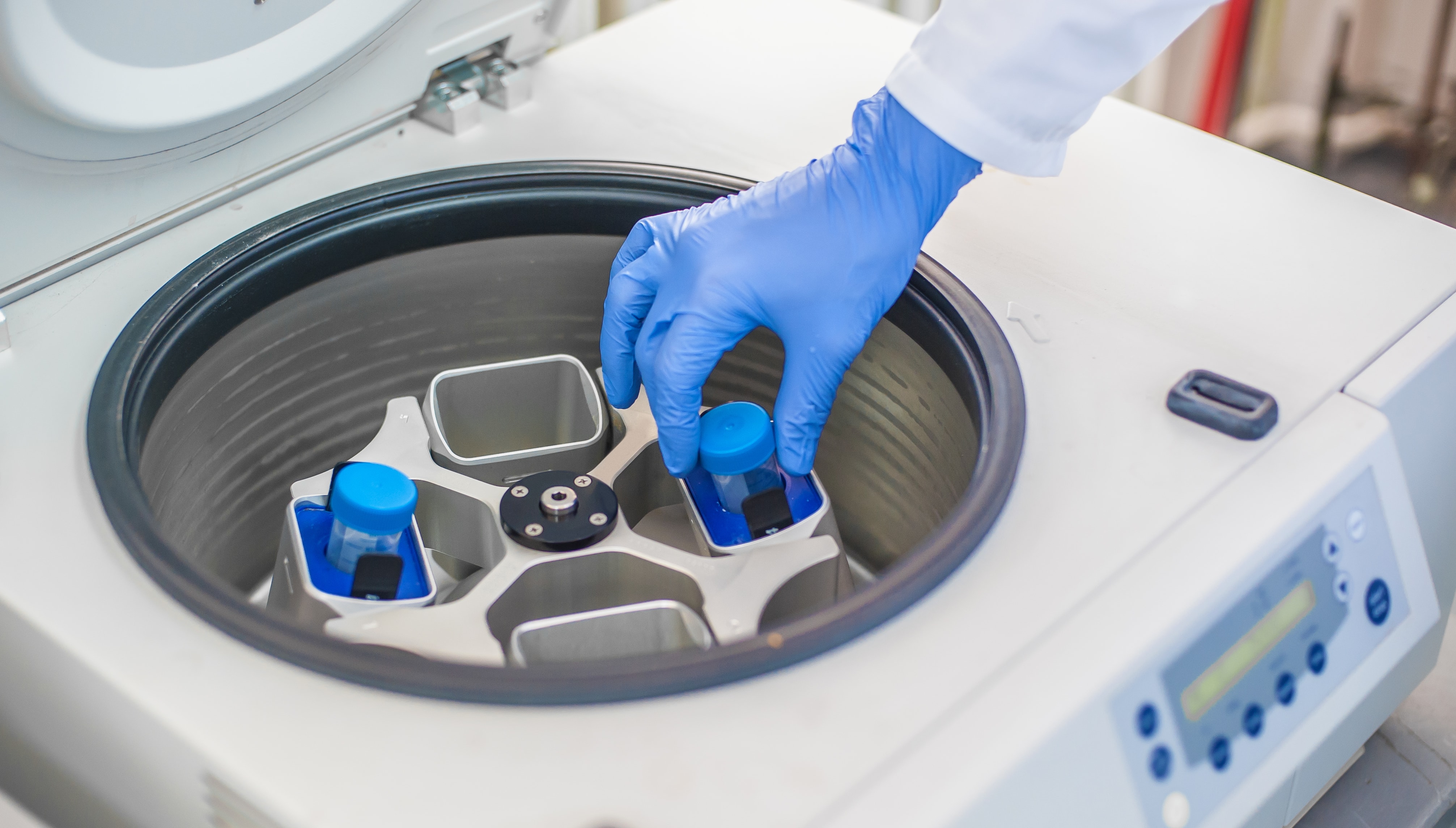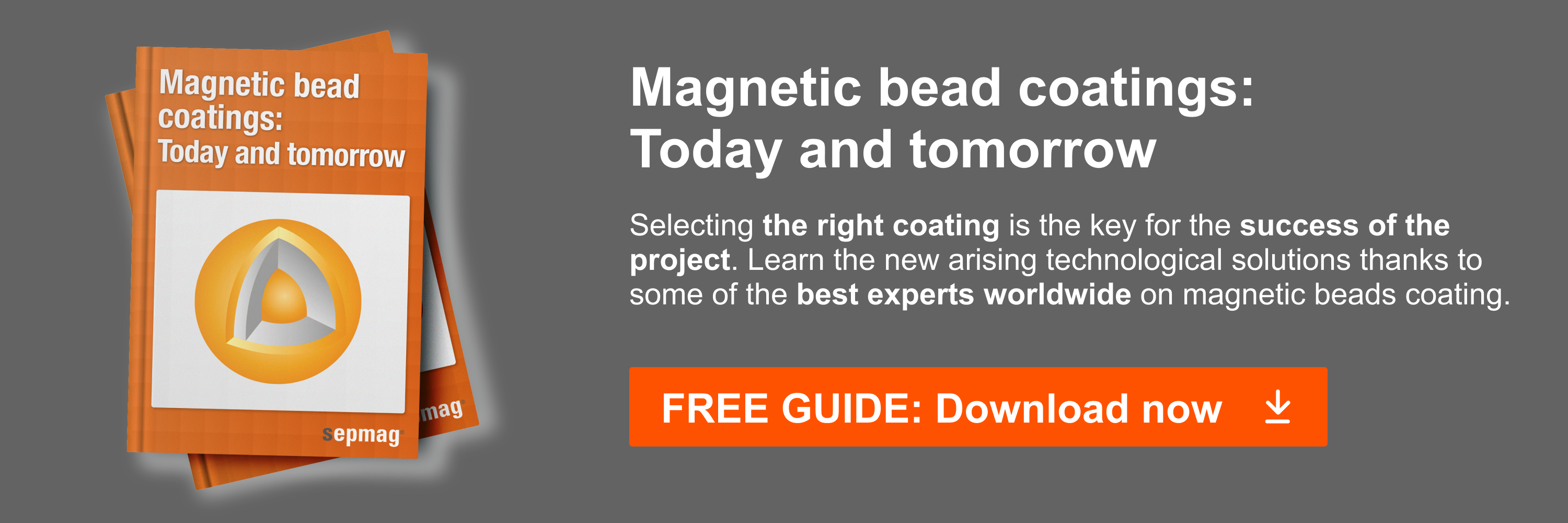As with any nanoparticle, the properties of silver nanoparticles are dependent on size. Many synthesis strategies produce nanoparticles with a wide size distribution. One way to separate these particles based on size is to use density gradient centrifugation. A sucrose gradient is an easy way to perform this separation because the sucrose gradient is simple to create using common laboratory equipment.
Density gradient centrifugation
Centrifugation creates centrifugal forces much greater than gravity. The result is that larger, denser particles are forced to the outer edge/bottom of the centrifuge tube and the lighter particles float toward the center/top. When the particles to be separated are similar in size and density it can be helpful to use a density gradient material to aid in the separation process. The use of a density gradient allows for a cleaner separation with more consistent fractions. The density fractions comprising the gradient are chosen to match the density of the particles being separated. The particles move down the gradient until they reach an area of matching density and they stop at this equilibrium state.
Attention must be paid to the choice of gradient material in order to prevent degradation of the particles being separated. This is particularly important when separating cellular organelles because a solution with inappropriate ionic strength could cause damage. Sucrose solutions have been found to be a good media for organelles, membrane vesicles, viruses, proteins, ribosomes, and polysomes. The ease of sucrose gradient preparation makes it an attractive method for the separation of silver nanoparticles.

Sucrose gradient preparation
A sucrose gradient is simple to prepare with common laboratory equipment. Solutions of sucrose are made with different concentrations of sucrose. The concentrations are chosen based on the target densities of the particles to be separated. For the separation of silver nanoparticles in this study they used increasing concentrations of 5 mL each of2.5%, 5%, 7.5%, 10%, 12.5%, 15%, 17.5%, and 20% layered on top of each other in a centrifuge tube. A good way to do this is to clamp a pipette tip right to the edge of the tube. This allows each successive layer of sucrose to gently fall along the side of the tube and to land on top of the previous layer. This gentle method prevents mixing of the layers. Using this method, the first sucrose solution to be applied would be 5 mL of the 20% solution, followed by 5 mL of 17.5%, and so on up to the top where the nanoparticle sample is applied.
Silver nanoparticle separation by sucrose gradient centrifugation
The silver nanoparticle solution was placed on top of the prepared gradient inside of the centrifugation tube. Only 5mL of solution was used. The tube was then centrifuged for one hour at 4000g. The separated fractions were collected by a micropipettor and analyzed by UV-vis absorbance, Fourier transform infrared (FTIR) analysis, X-ray diffraction, and transmission electron microscopy. These methods confirmed that the sucrose gradient centrifugation successfully separated the silver nanoparticles into distinct fractions.
What if you don’t want to make your own sucrose gradient for density gradient centrifugation?
It is important to keep in mind that a sucrose gradient will not be appropriate for every application of density gradient centrifugation. There are many other materials commonly used. For example, glycerol is good for proteins while sorbitol is used for nonmammalian cellular organelles. Dextrans are useful for mammalian cells and subcellular particles, while inorganic salts like CsCl, Cs2SO4, and KBr for DNA, RNA, viruses, and lipoproteins. There are also density gradient centrifugation tubes filled with colloidal silica media for use with cells and cell organelles. All of these materials and more are commercially available in prepacked columns to make it easy to perform density gradient centrifugation on your sample. These products are sold under proprietary trade names, but they will all come with product data sheets that will provide information about appropriate sample type and detailed instructions for use.




